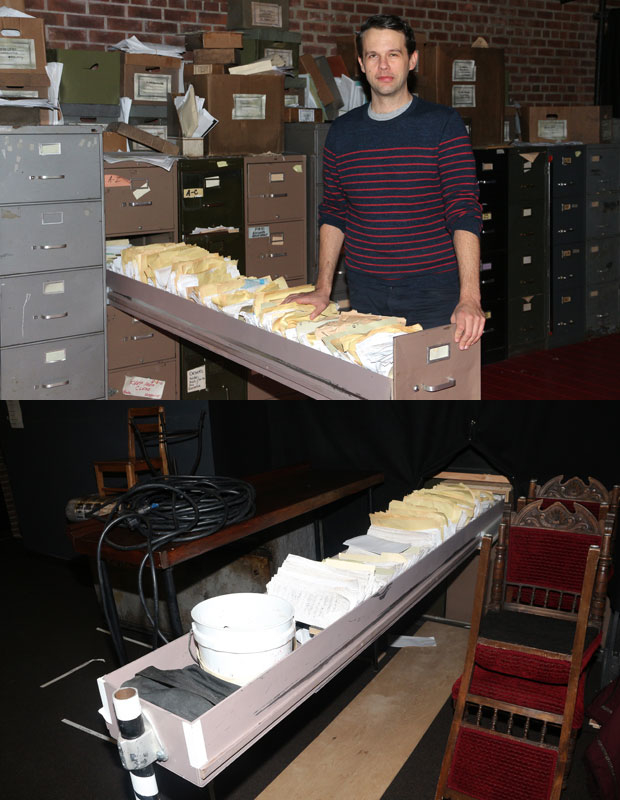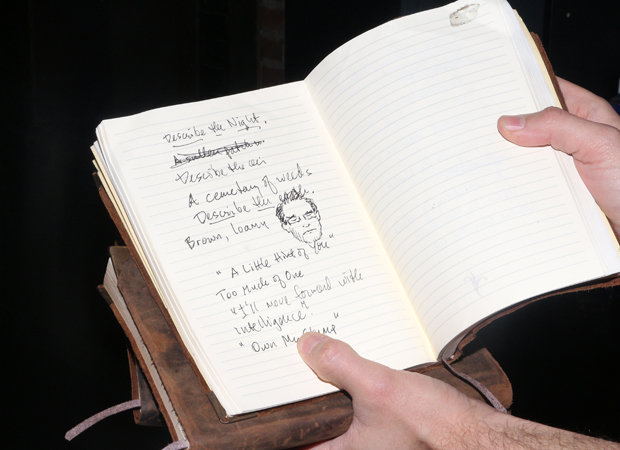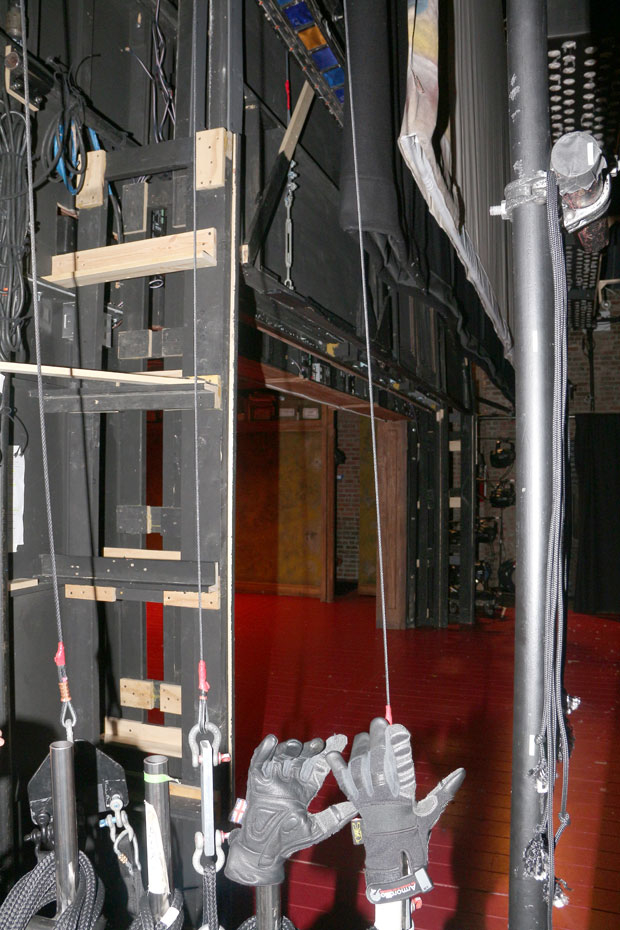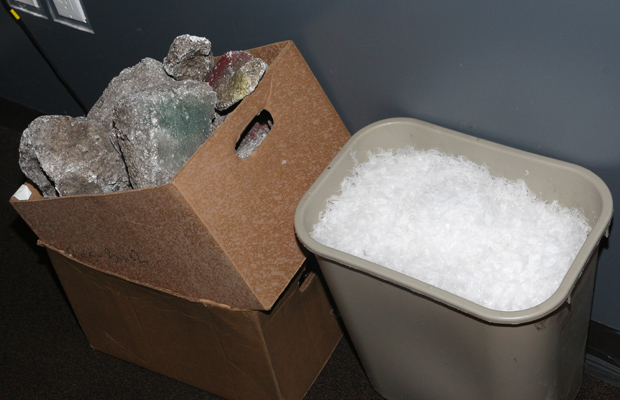Tim Mackabee Describes 5 Secrets From the Set of Describe the Night
When scenic designer Tim Mackabee signed on to build the worlds of Rajiv Joseph's Describe the Night, he knew the project was going to take a lot of work. Joseph's play, directed by Giovanna Sardelli, is set in Russia and follows seven people whose lives mysteriously intertwine over the course of 90 years.
Mackabee designed one version of the set for the production's September 2017 world premiere at Houston's Alley Theatre, which would fit the venue's in-the-round configuration. He then went about adapting that creation for the December 2017 New York premiere at the Atlantic Theater Company, which is a traditional proscenium space.
Right as rehearsals began in Texas, Hurricane Harvey hit and flooded the theater. "They had started loading in already," says Mackabee, "so nothing could be saved because it was all underwater." All was not lost, however. The University of Houston provided the Alley with a temporary space so the show could go on, and Mackabee, within a matter of days, had the opportunity to come up with a third version of his concept.
"It was nuts," he says. "We designed the Atlantic version to look very much like Houston version number one." But it was really the third iteration that landed in New York City. "It was tragic that there was a hurricane, but we learned a lot of things, like, if you have nothing, the design actually might be better."
Mackabee's final version of the set is littered with little details the audience won't be able to see. He took us on a tour to reveal his secrets.
1. The Hall of Information

The production refers to the play's unit set as "The Hall of Information." "The idea is that this is all of Russia's secrets," Mackabee says of the shelves of boxes on the stage walls. "The shelves are all lined with different-colored LED tape, so they change color all night to focus your attention." Little details include spiderwebs, which can only be seen if you're seated in the first few rows, and distinct labels for nearly every box. "Rajiv was insistent on that," says Mackabee, adding that the playwright himself was the one who actually wrote most of the labels, filing numbers, and dates. "It kept him busy during tech."
2. The Magic Filing Cabinet

(© David Gordon)
This "fantastically long filing cabinet" is pulled out by the character Nikolai, played by Zach Grenier, so he can retrieve a file. All told, the drawer extends 14 feet, and Grenier, as he pulls, is assisted by a crew member in the back providing support. "There's a drastic weight shift when you pull out 14 feet," Mackabee says, adding that, luckily for the production, "there's a doorway in the back wall of the Atlantic with a giant hole in it" that allows the set piece to live. "We had it longer, but no one would be able to function backstage."
3. Isaac Babel's Notebook

(© David Gordon)
Much of Describe the Night hinges on a mysterious notebook that belongs to the central character, Isaac Babel (Danny Bursten), and manages to fall into various hands over the course of the play's 90-year span. There are four such notebooks used during an average performance. "Some are for tracking purposes," says Mackabee, "because they can't get to each side of the stage fast enough." This particular notebook is one used at the start of the play, and Burstein has written his first lines of the play within it.
4. The Fly System

Atlantic's Linda Gross Theatre, home to Describe the Night, is situated within a space that used to be a church. As a result, the stage itself is lacking in a variety of contemporary flourishes. For this production, the theater specially built a fly system so scenery including backdrops and an upstage door wall could be flown in and out. "Everything has tracks, is counterweighted, and is all hand-operated. It's old-fashioned scenery, and crazy, heavy stuff" that requires its operators to wear gloves (as seen in the photos) so they don't burn their hands on the ropes.
5. The Berlin Wall

(© David Gordon)
At one point during the play, the Berlin Wall falls onstage, with rocks and snow blown in the direction of the audience. Though it has the appearance of reality, the snow is made of plastic and the rocks are made of Styrofoam. "These get set in about three minutes," says Mackabee. "The crew, quietly, takes these rocks and puts them on top of the Berlin Wall, and then covers them with snow." It's an all hands on deck moment, "because they can't do it until the scene starts."

(© Ahron R. Foster)
The Atlantic Theater production, model to stage:











